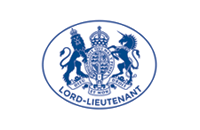The History of the Role
The Office of the Lord-Lieutenant was established in England by King Henry VIII in 1545.
In 1549 Parliament recognised the appointment of Lieutenants (who were also called Kings’ Justices) in times of emergency “for the supressing of any commotions, rebellions or unlawful assembly.” Their main role was to superintend the mustering of county levies, to keep those levies loyal to the Crown, and to be responsible for local military defence and the maintenance of order. In 1585, for example, Lieutenants were charged with surveying the coast and inspecting coastal defences against the threat of the Spanish Armada.
In 1871 responsibility for the militia was removed from the direct control of the Lord-Lieutenant, and in 1921 by the removal of power to call men of the county to fight in case of emergency.
Traditional links with the military have however been retained, in a more modern and appropriate form. The Lord-Lieutenant has strong connections with local units of the Royal Navy, Royal Marines, Army, Royal Air Force and their associated Cadet Forces including the association of the Lord-Lieutenant with the Volunteer Reserve Forces. Each year the Lord-Lieutenant personally appoints two Cadets to accompany her on military and other formal engagements. This recognises those cadets who have given exemplary service to their cadet unit.
Connections with other uniformed organisations continue to be an important part of the work of the Lord-Lieutenant, for example the Police, Fire and Ambulance services, and many voluntary bodies such as the Red Cross, St. John Ambulance and other national and local youth organisations that serve local communities.
The role of Lord-Lieutenant has evolved over the centuries, to be relevant to modern times. Two welcome reforms took place in the late 20th Century. The first in 1966 allowed Lord-Lieutenants to appoint Deputies other than those associated with military service, to reflect wider aspects of community service; and in 1975 the first lady was appointed as a Lord-Lieutenant when Lavinia, Duchess of Norfolk assumed the role in West Sussex. The Lord-Lieutenant of Suffolk, Clare, Countess of Euston was appointed in 2014 and is the first female to hold this office in the county.
From earliest days the Lord-Lieutenant has always been associated with the work of Magistrates, and until the 19th century, appointed the Clerk of the Peace. Like many of her predecessors, our current Lord-Lieutenant is a magistrate and holds the ancient office of Custos Rotulorum or Keeper of the Rolls for Suffolk. She is also Chairman of the Suffolk Advisory Committee on Justices of the Peace, which recommends the appointment of magistrates in the county.
The Lord-Lieutenant also acts as Chairman of the Advisory Committee for the appointment of Tax Commissioners.
